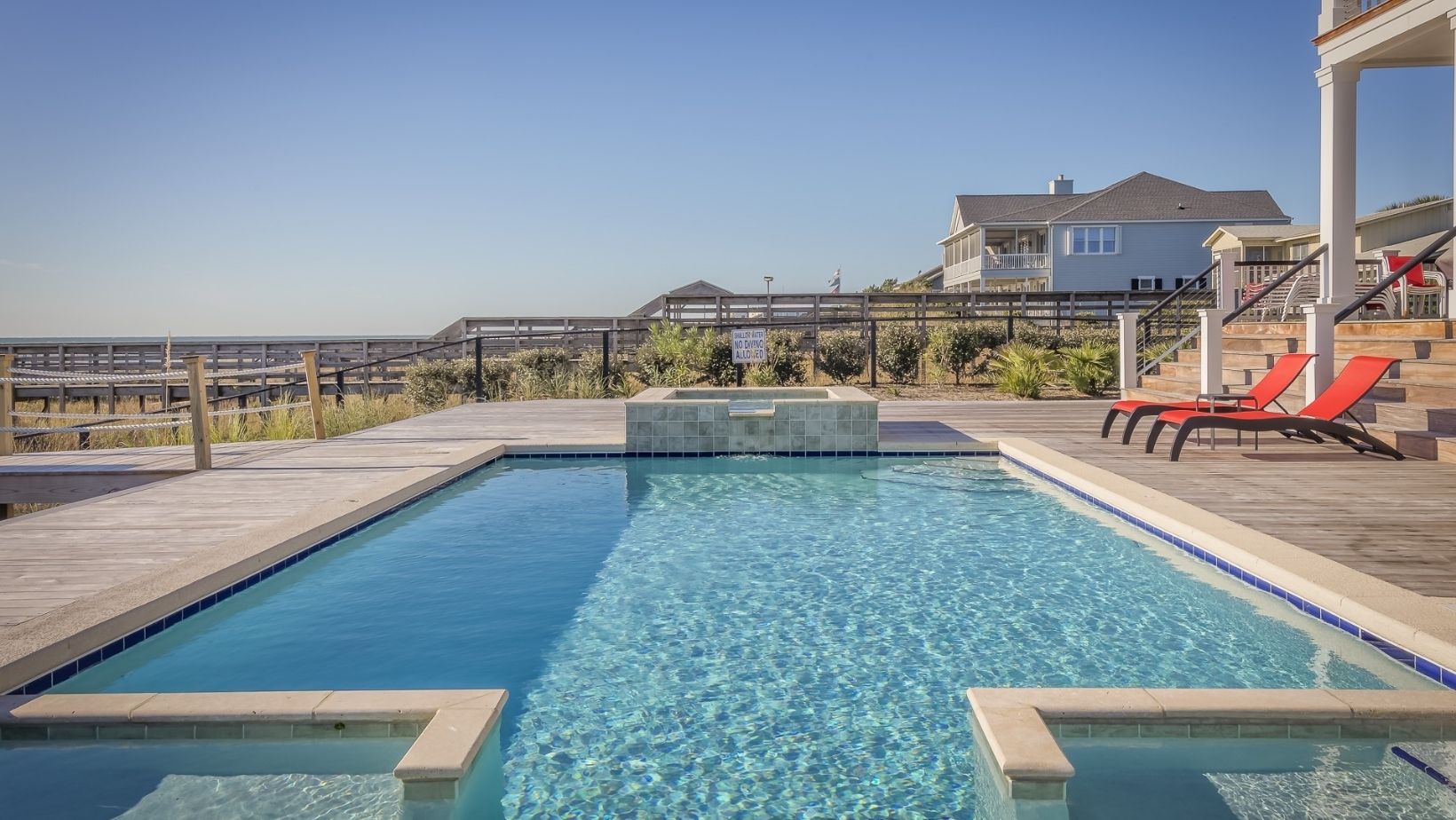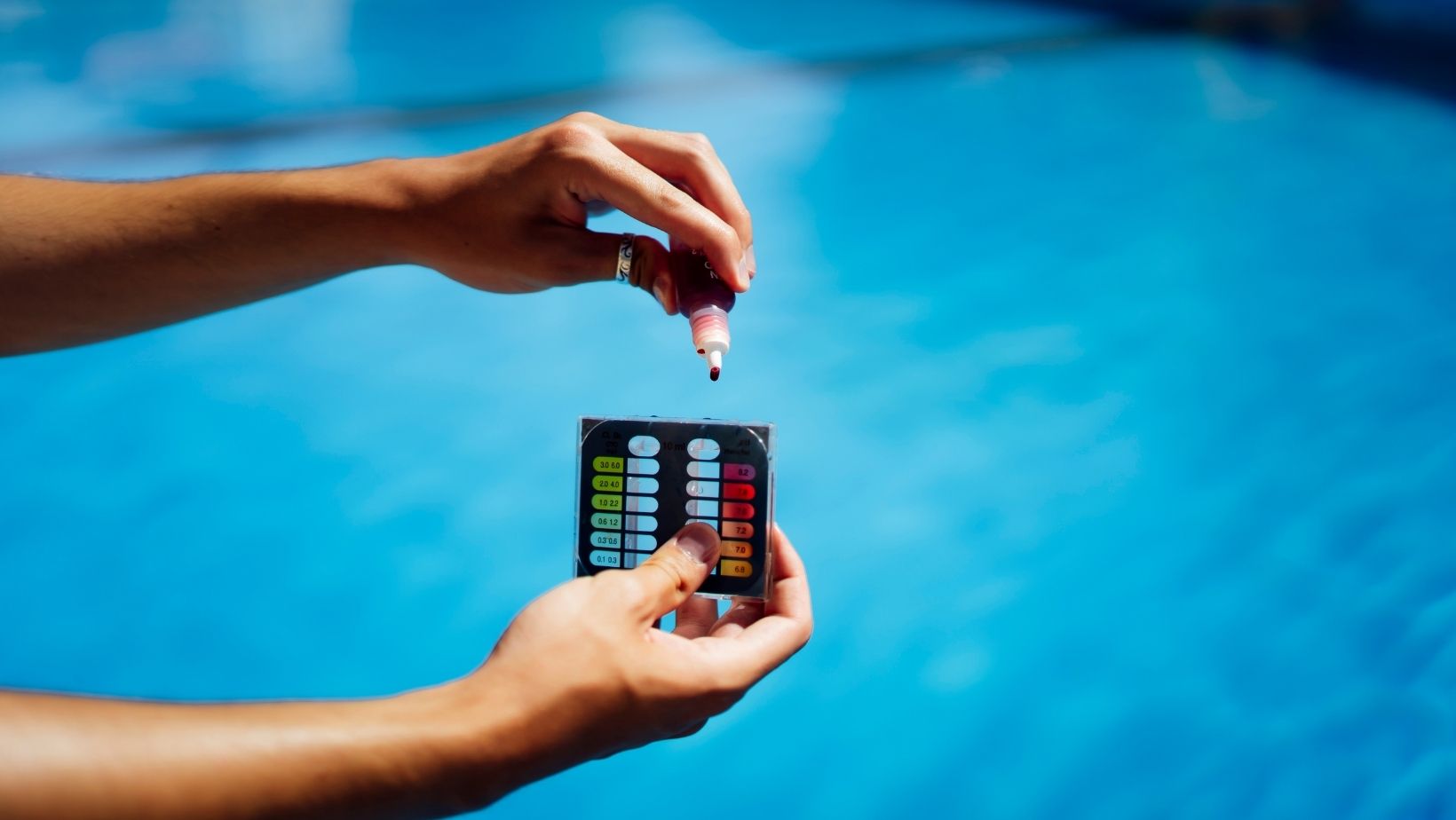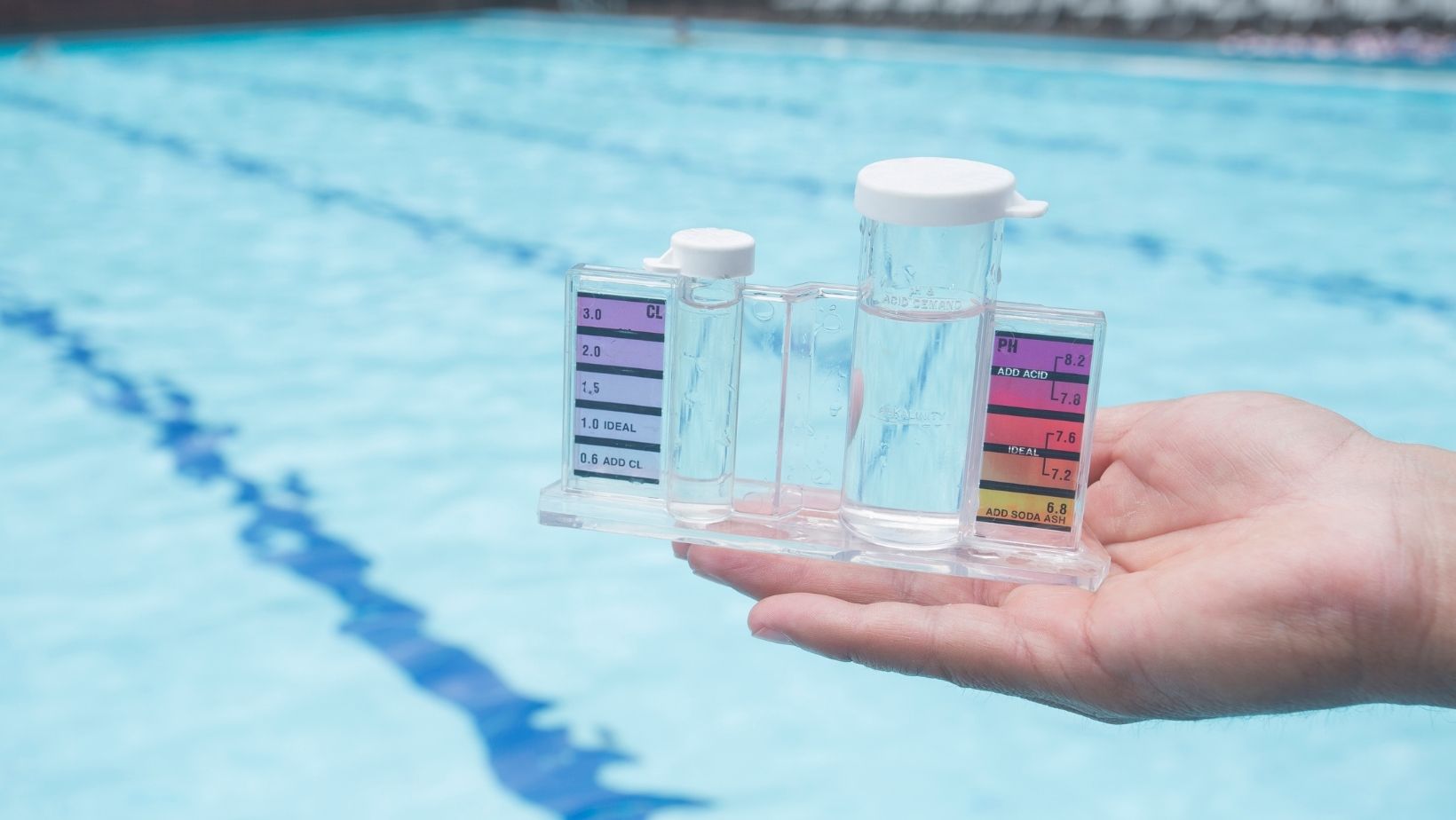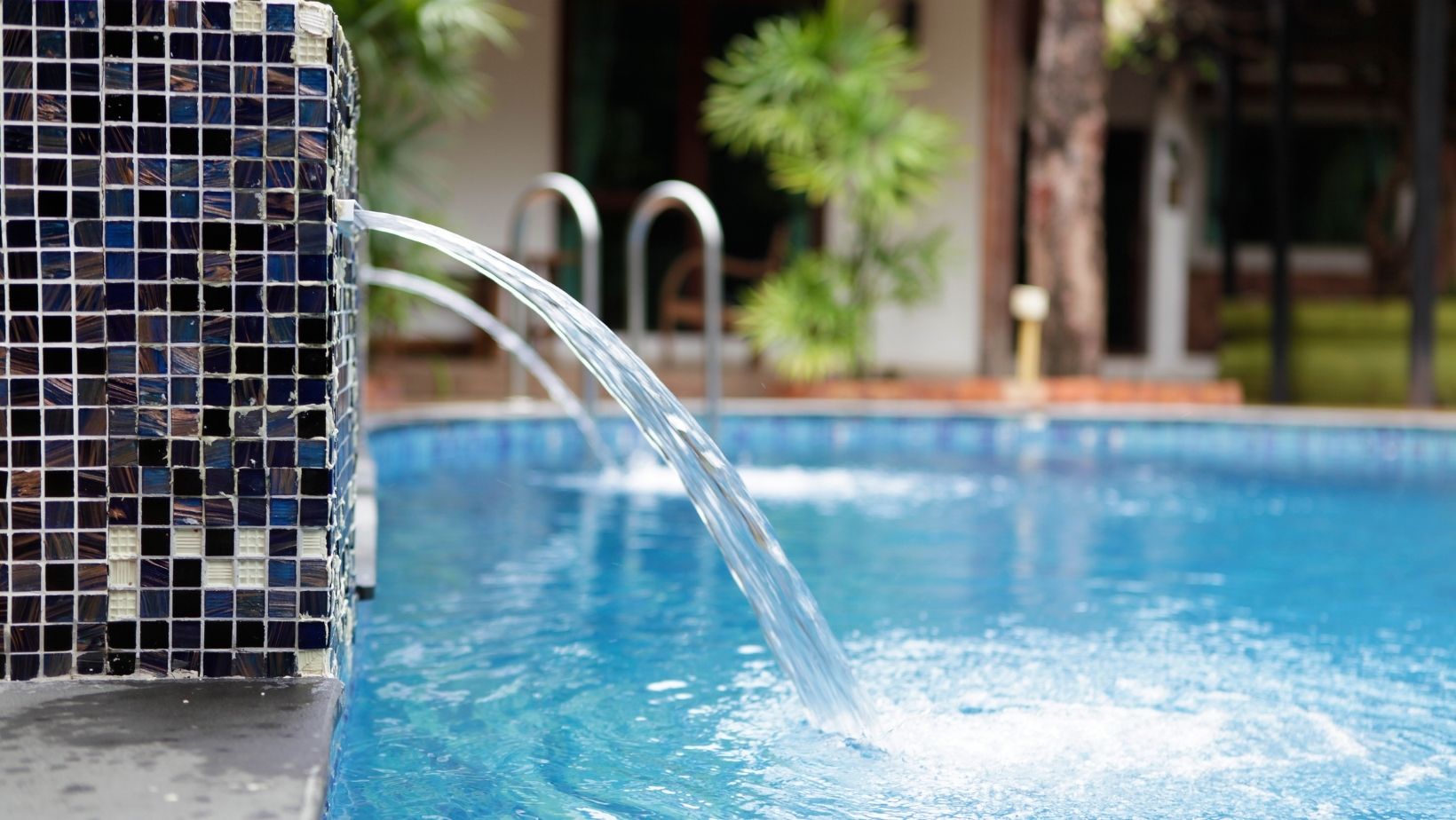Why Is Your Swimming Pool’s pH Level Important and How To Maintain It

Skin feeling itchy after going for a swim in your pool? Can’t figure out what’s wrong? Keep reading to learn more about what’s causing it!
As professionals in pool maintenance will tell you, one of the most vital parts of your pool is the water chemistry. Swimming pools require properly balanced pH levels to prevent skin irritation and keep the chlorine in the water functioning properly.
There can be many reasons for the levels to be imbalanced, but the most obvious reason is the addition of chemicals. This can be the chlorine you put in or any residual chemical that came in contact with the pool through your deodorant, shampoo, or other products.
Whatever the reason may be, keeping the balance perfect might pose a difficult challenge to those who are not so familiar with handling chemicals. This is where we step in. We’ve put together a small guide to help you understand why your pool’s pH level is important and how you can maintain it.
So, without further ado, let’s jump right in!

What is pH?
For those who don’t know, pH stands for the potential of hydrogen and measuring it can be pretty complex. But it is necessary to know the acidity of a liquid, in this case, your pool water.
Pure water has a neutral pH level of seven. Levels below that number are considered to be acidic, and above seven, it’s considered to be basic.
At a high concentration rate, both bases and acids can be corrosive. A strong base or acid has the potential to damage substances like plaster, metal, or even human tissue.
We’ll discuss more about how to lower pH level in your pool and also how to raise it.

5 Reasons Why Proper pH Is Vital
Now that we’re familiar with what pH is, let’s discuss why proper pH in your pool is vital. Here are five reasons why you should keep your pool water within the target range:
1.Eye and Skin Irritation
If your skin has ever felt itchy and dry after being in the pool then it’s likely that the water has turned acidic. Not only can acidic water stings your nasal passages and eyes, but it leaves your hair feeling brittle as well.
Keep in mind, both low and high levels of pH can cause these same problems.
2. High pH is Bad for Chlorine
Are you at your wits’ end because you can’t figure out why your pool water isn’t clear? Have you been pouring in chlorine, but it’s just not working?
If the answer to both these questions is yes, then it’s likely your pH level is too high. The higher the pH level goes toward the basic or alkaline range, the less impact chlorine will have on your pool water.
3. Damaging the Vinyl Liners
A high or low pH level can cause the vinyl liner to literally grow by absorbing the water. This will cause wrinkles.
The higher the pH level, the more rapidly the vinyl liner will age, and the sooner it will need to be replaced. These repairs or replacements can range from $1000 to $3000. So it’s best to be vigilant about this!
4. Corrosion
Not only can low pH levels damage your skin and hair, but it can turn your pool water acidic and cause it to corrode everything. From diving board bases to slides, ladders to mechanical systems, it will take over.
It’s even worse for those who have gunite pools, as the low pH can even cause the plaster to corrode. These pools are known for their strong and dependable structure, so the irony is not lost there.
5. Dealing with Cloudy Water
While a high level of pH isn’t directly associated with cloudy pool water, it can certainly affect how chlorine and other chemicals work in it.
A high pH generally keeps the calcium from dissolving properly. This is what causes the water to be cloudy and the calcium to scale, both in regular and saltwater pools.
Maintaining and Monitoring Proper pH Levels

Running daily tests using pH testing strips is the best way to determine what level the pH is at. In order to test the water, you have to go to an area that’s away from the returns and the skimmer. Next, read and follow the instructions given on the package and start your test.
Remove the strip from the water, but remember not to shake it! Give it some time for the colors to fill in, and then you can compare the color on the strip with the range given on the container.
From there, it’s all about adjusting the pH. You can do this by using pH increasers, aka bases, and pH decreasers, aka acids. How much you need to use will depend on the volume of your pool and how far out of balance it is.
How to Raise the pH Level
If you find yourself in a position where you have to raise the pH level of your pool, then you can use alkalinity to buffer the pH.
It’s a solution most people use, and it prevents the pH from causing serious damage to your equipment and from dropping drastically. However, keep in mind that the addition of this alkalinity can also raise the pH of your swimming pool.
Baking soda or sodium bicarbonate is a natural alkaline that has a pH of over eight. So, by adding it to your pool water, you can raise the pH. This is why raising the alkalinity is important first.
If, by any chance, the water alkalinity is already within the recommended range, then you can use pH increasers. It’s vital to remember that for large increases of alkalinity, it’s best to raise it in multiple doses.
How to Lower the pH Level
When it comes to maintaining the pH level of a pool, most of the time, you’re lowering the pH rather than raising it. This can be done by using a pH Minus, but some people use muriatic acid instead.
Both will work just fine. However, muriatic acid can cause severe burns and can even blind you if it splashes into your eyes. Always remember to read and follow the instructions provided and be careful.
A Continuous Balance
In order to have a functioning pool where you can enjoy your time worry-free, keeping the pH level in check is a must. It’s a constant process you’ll have to get used to. Make sure to check the levels regularly and ensure that it hasn’t changed too much within the last 24 hours.
It’s crucial for you to know that anything can harm the balance of your pool. People jumping into the pool or even leaves and debris falling in the water can easily raise or lower the pH level. This is why it’s important to strike the perfect balance and maintain it at the same time!

Consider Hiring a Professional
While controlling and maintaining the proper balance of your pool can sound easy at first, you’ll soon find yourself handling different chemicals. This can overwhelm anyone. Constantly keeping the levels in check and monitoring the chemical levels so that you can make adjustments accordingly is hard work.
Your pool has to be checked every day, even though it’s recommended to inspect it weekly. Even if you keep up with the regular check-ups consistently, there are still a number of things that can go wrong that could be both expensive and dangerous.
If you’re not sure about what you’re doing, then you can enlist the help of a professional pool maintenance service. They can keep your water balanced. You’ll have a clean and safe pool to jump in at any time!
Final Thoughts
In conclusion, we’d like to say that when it comes to maintaining a pool, keeping the chemistry balanced is key. The pH level is the starting point of that balance.
There will always be factors impacting the pH level of your pool, but with a little bit of practice and focusing regular attention on it, you too can make sure the water stays within the right pH range.
Whether it’s a pool party or a backyard BBQ, everybody can enjoy it and be safe at the same time.
Let us know in the comments below how you maintain your pool and what worked for you!



